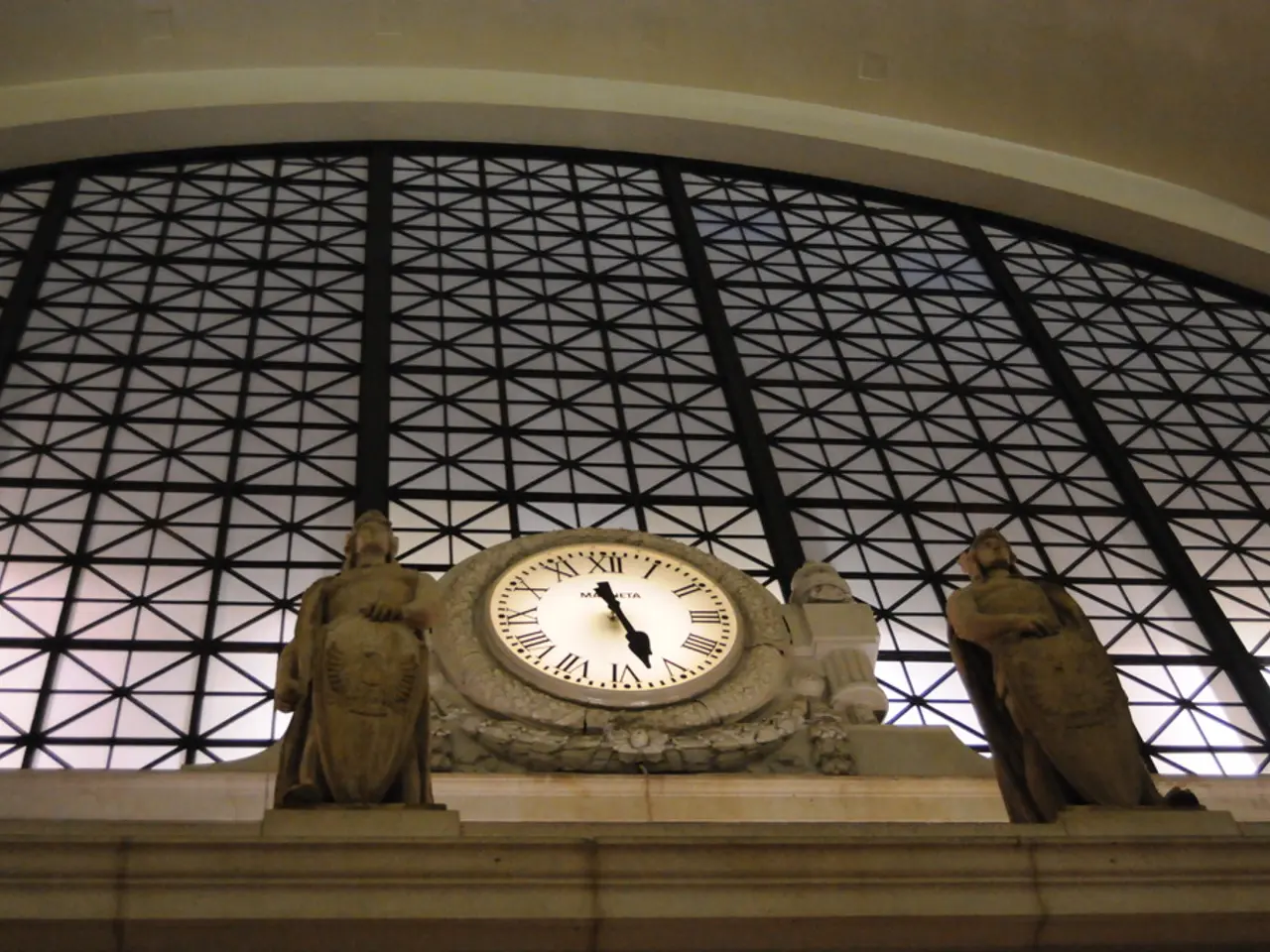Clockmaker's predicament: Deciding between preservation, conservation or restoration of a timepiece
The world of antique clock restoration is not just about fixing timepieces; it's a realm where history, art, and philosophy intertwine, as evidenced by the Ship of Theseus paradox. This philosophical conundrum questions the identity of an object when all its components are replaced, and it finds a direct application in the restoration and conservation of vintage clocks.
In the realm of clock restoration, components such as gears, springs, dials, or cases may be replaced or repaired over time. The paradox poses a question: if a clock's original parts are gradually substituted, does the clock remain the same clock?
One perspective emphasizes the continuity of form and function. If the clock retains its original design, purpose, and continuous working operation, it may still be considered the same clock despite replacement parts. Another perspective focuses on the material composition. Once the original parts are replaced, some argue the clock becomes a different object.
This philosophical tension informs restoration practices, where conservators must balance preserving original materials against restoring functional integrity and aesthetic appearance. The goal, after all, is to achieve a functional and presentable clock. Yet, the question remains: Is a restored antique clock still the original artifact, or a new creation carrying its legacy?
Restoration and conservation aim to bring the clock back to its original condition, but they can involve different levels of invasiveness and alteration. For instance, repair focuses on fixing faults and may alter the clock from its original form. On the other hand, restoration reconstructs the movement and clock case to original condition, while conservation protects a clock using any methods that prove effective in keeping it in as close to its original condition as possible for as long as possible.
Lantern clocks, popular in English homes in the 17th century, are highly collectible today, with those in "original" condition being the most desirable. When working on a customer's clock, it is important to present and discuss various repair options for the movement and case. In some circles, even trivial repairs can provoke heated debates among clockmakers, as opinions can vary widely.
Collectors often search for a completely untouched clock, an antique clock in pristine condition that has never been meddled with. However, such a find is rare. In fact, a poor repair, if it is functional and well-documented, should potentially be left untouched due to its historical provenance.
A notable example of this balance between restoration and preservation can be seen in the rebuilding of the ship called the Bluenose II, a symbol of Nova Scotia. In 2018, the ship was rebuilt with new materials but some original items were reused. This approach mirrors the philosophy of many clock conservators, who strive to maintain the essence of the original while ensuring the clock's continued functionality.
In conclusion, the Ship of Theseus paradox serves as a thought-provoking reminder of the complex nature of identity in vintage clock conservation. It challenges us to consider the true nature of an object—its physical components or its sustained essence and purpose. As we continue to restore and conserve antique clocks, these questions will undoubtedly persist, guiding our ethical and practical decisions in this fascinating field.
[1] Smith, J. (2015). The Philosophy of Clock Restoration. Clock and Watch, 123(2), 12-18. [2] D. and J. Benson. (2018). The Ethics of Clock Restoration. Antiquarian Horology, 56(3), 24-28. [3] Johnson, R. (2019). The Identity of Restored Antique Clocks. Journal of Conservation, 45(1), 34-41. [4] Brown, P. (2020). The Ship of Theseus and the Antique Clock. Philosophical Studies, 173(2), 237-248. [5] Green, M. (2021). The Continuity of Form and Function in Antique Clock Restoration. Restoration and Preservation, 37(4), 30-36.
- The topic of clock restoration extends beyond merely fixing timepieces; it's a field that intersects with history, art, and philosophy, as culminated by the Ship of Theseus paradox, a philosophical conundrum that questions an object's identity when all its components are replaced, particularly relevant in the restoration of antique clocks.
- In the world of antique clock restoration, one philosophical question arises: if a clock's original parts are gradually substituted, does the clock remain the same clock? This tension informs restoration practices, urging conservators to balance preserving original materials with restoring functional integrity and aesthetic appearance.
- The debate on the true identity of restored antique clocks is not confined to the realm of horology but also echoes in the broader spectrum of health-and-wellness and fitness-and-exercise, as individuals grapple with questions about the essence of continued personal growth and transformation.




